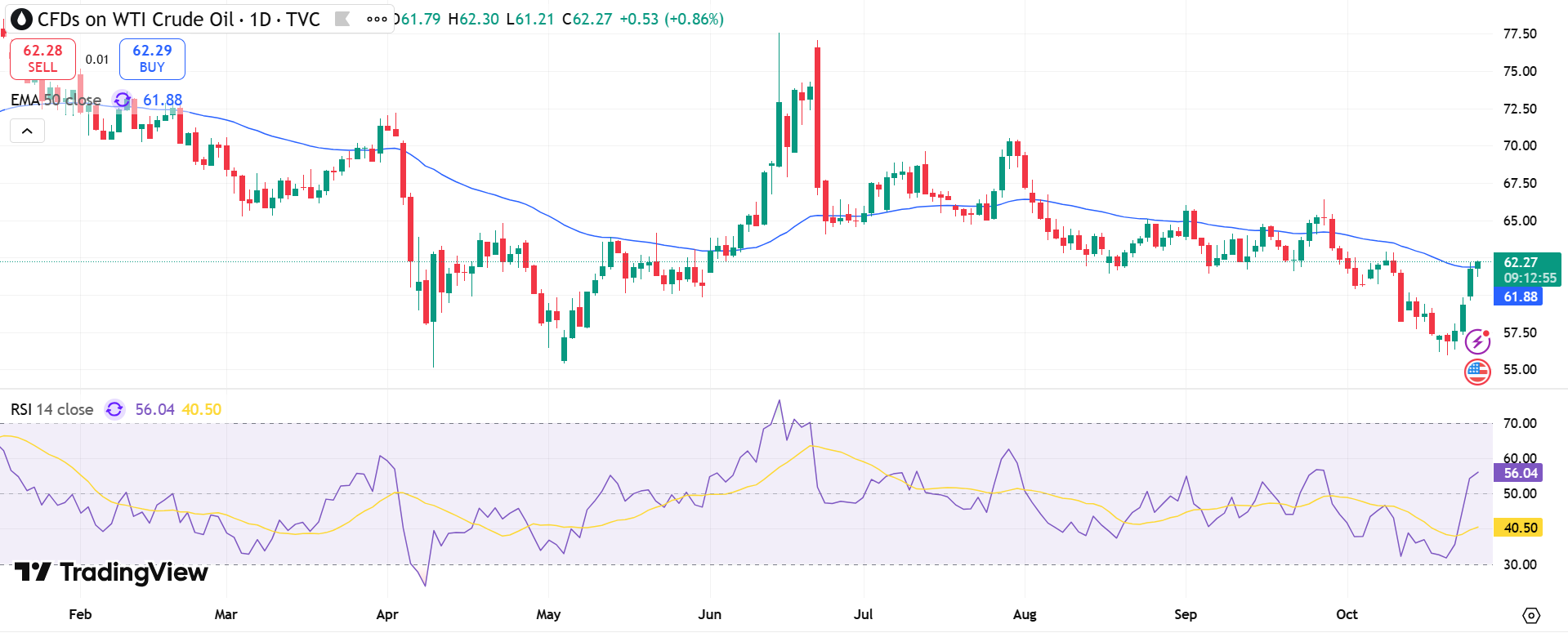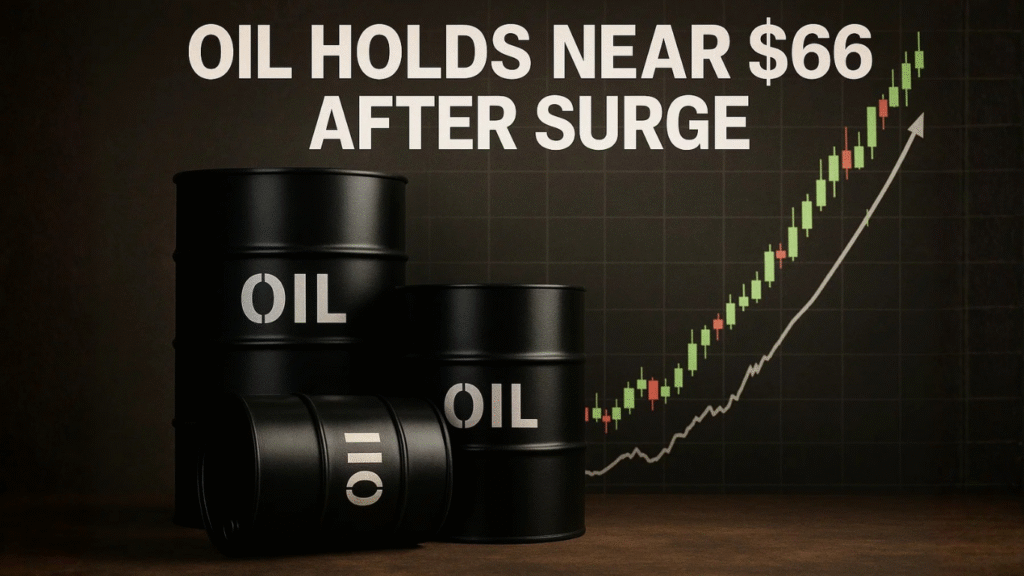Oil prices steadied on Friday, pausing after a dramatic surge driven by fresh U.S. sanctions on Russia’s two biggest oil producers. Brent crude futures slipped 0.15% to $65.89 a barrel at 09:59 GMT, while U.S. West Texas Intermediate fell 0.15% to $61.70.
The modest decline follows a 5% jump on Thursday, leaving both benchmarks poised for a 7% weekly rise — their strongest performance since mid-June. The rally underscores how swiftly geopolitical tensions can shift the energy market’s tone from oversupply worries to fears of shortage.
Market structure reflected that change. Six-month Brent and WTI spreads swung back into backwardation, where near-term contracts trade above later-dated ones — a sign traders expect tighter supply ahead.
U.S. Sanctions Target Russia’s Oil Titans
Washington’s new measures against Rosneft and Lukoil — together responsible for over 5% of global output — aim to pressure Moscow to end the war in Ukraine. The decision immediately rattled trade flows across Asia.
- Chinese state refiners temporarily halted Russian crude purchases, trade sources told Reuters.
- Indian refiners, the largest buyers of Russian seaborne oil, are preparing to sharply cut imports.
- Kuwait’s oil minister said OPEC stands ready to boost production to prevent shortages.
“Flows to India are particularly at risk,” said Janiv Shah of Rystad Energy. “China’s refiners are better positioned due to diversified sourcing and healthy stockpiles.”
The U.S. signaled readiness for further action, while President Vladimir Putin called the sanctions “unfriendly” but claimed they would not severely harm Russia’s economy. Still, the move builds on coordinated actions: Britain imposed similar penalties last week, and the EU’s 19th sanctions package included bans on Russian LNG imports and restrictions on Chinese refiners linked to Moscow’s trade network.
Outlook: Supply Strain and Diplomatic Stakes

Despite Friday’s stability, the market remains on edge. Russia, the world’s second-largest crude producer after the U.S., is too central to global supply for disruptions to be easily replaced. Traders are also watching next week’s Trump-Xi summit in South Korea, where easing trade tensions could reshape demand forecasts.
Analysts see two key dynamics ahead:
- Supply risk: Extended sanctions or retaliation could push Brent above $70 in the near term.
- Diplomatic relief: Progress in U.S.-China talks may temper energy volatility and support growth prospects.
Oil’s weekly climb highlights how geopolitics continue to dictate energy flows — and how fragile global supply balance remains heading into year-end.


